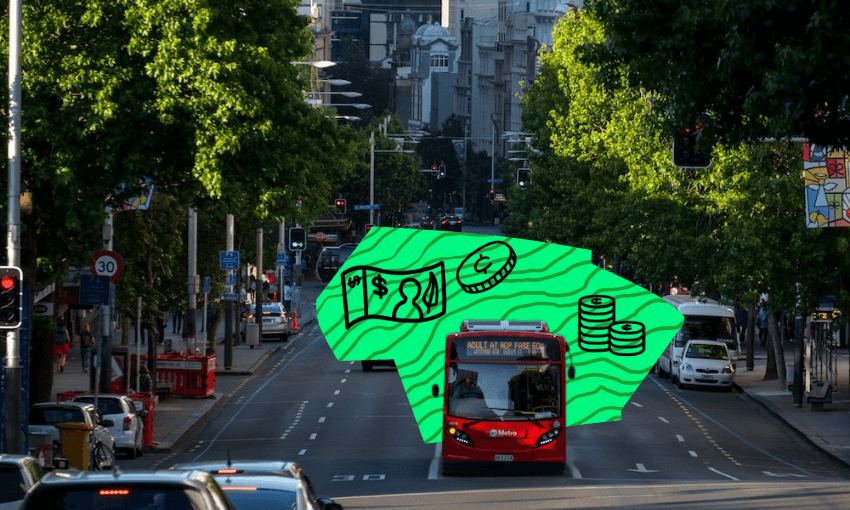Thanks to increased operating costs and new fare structures, many public transport users in Auckland are now paying more for trains, buses and ferries. Shanti Mathias explains what’s behind the changes.
Schools are back around the country, but in Auckland, kids aren’t the only ones to have returned to a weekday routine after a break. The trains are also back, after the city’s rail network took a scheduled break for all of January and part of December for track upgrades.
Along with the reopened routes has come another change that Auckland train, bus and ferry commuters might not be stoked about: a revised fare and zone structure, the biggest overhaul since 2016, implemented from February 2. The fare change averages out to an increase of 5.2%.
Auckland isn’t the only place where public transport fees are increasing; Canterbury’s Metro has announced its fees will increase from the middle of the year, at the same time as (but unrelated to) the Motu Move rollout.
These two regions may just be the first; following a discussion document released in November, councils received a request from NZTA to increase the amount of money users pay for public transport, and both Auckland Transport and Environment Canterbury cite the need for more “farebox recovery” as one of the reasons they’re increasing fares.
“Increasing operating costs and the requirement to provide more private revenue share are some of the factors behind the fare change,” said the Metro post announcing the change to the Canterbury public transport system.
“We know any increases add to people’s cost of living and so these are carefully considered, however the cost of running, maintaining and investing in Auckland’s public transport network is also increasing and we need to keep up with this,” said Stacey Van der Putten, Auckland Transport’s director of public transport and active modes.
A post on the Greater Auckland blog goes into greater detail about why public transport operating costs have increased. Inflation is one factor, but operating costs have been increasing even more than inflation. Decisions not to increase fares in 2021 and 2022, when user numbers were dramatically down due to Covid, meant steeper rises in 2023, 2024 and 2025.
Standardising fares is simple for users, but can mean difficult decisions for public transport operators. For example, in Auckland ferry fares were integrated into the same fee structure as other forms of transport in 2020, but less revenue is made from ferries than buses or trains because fewer people use them. But because the fares are standardised, ferry fares can’t be adjusted to make up for the fact they bring in less money without train and bus users being hit with price increases too.
Under Auckland's revised fare system, people who travel long distances, and most frequently, won’t see a major change. The number of zones has been decreased, from 14 to nine, with zones merged in Manukau and others merged in the East Coast/Rodney area. There’s also a cap on the number of zones you can be charged for: the fare for a single journey maxes out at four zones, even if you’ve travelled across five or more zones. A cap of $50 per person per week across all of Auckland Transport’s services remains in place – the agency said 25,000 people approach this cap in Auckland every week.
Auckland’s system of zones isn’t the only way to charge for public transport. In Christchurch, where fares will increase by 50% in June, Environment Canterbury has been trialling a flat fare across the whole city, and has just extended the trial to 2026. This means that public transport users don’t need to tag off. “It’s really straightforward, because you know what your fare will be,” says M Grace-Stent, a spokesperson for urban advocacy group Greater Ōtautahi. “It’s been especially good for people who take public transport more infrequently, who aren’t commuters – who want to take their kids out on the weekends or walk to work then bus home,” they said.
While fare costs aren’t the only reason people avoid public transport – reliability, frequency and route options are also major factors – Grace-Stent is worried the fare increase in Christchurch will offset some of the increased ridership seen thanks to the flat fare trial. The Motu Move system, under which Canterbury will be the second region of the country to allow people to pay for public transport with contactless cards and phones, will be more convenient for visitors than Cantabrians who already use public transport. “We’ll just have to see how the fare changes affect people,” they said.
The dictum from NZTA for councils to bring in more revenue from public transport users remains in place, and will likely lead to fare changes in other areas of the country. Meanwhile, in other parts of the world, different ways to structure fares have been popular; Queensland, in Australia, implemented universal 50 cent fares last year, which saw dramatic increases to public transport use and received bipartisan political support. In west England, a scheme to make public transport free during passengers’ birthday months was deemed more efficient than a fare cap. In other places, private services step in to provide routes councils don’t make available: Uber has launched bus services in India, Mexico, the US and Brazil.
In New Zealand, a coalition of organisations has called for free public transport for under-25s, tertiary students and Total Mobility and Community Services card holders.

